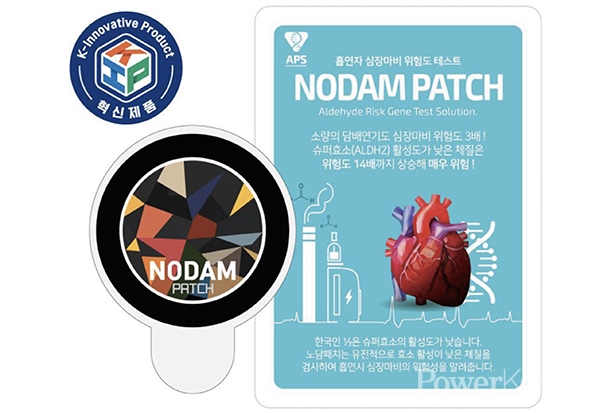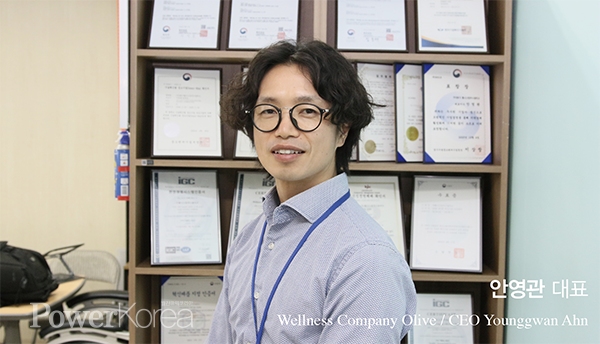 |
||
Out of the world*s 8.1 billion people, approximately 12%, or around 1 billion people, are smokers. The World Health Organization (WHO) has designated May 31st as World No Tobacco Day each year to promote a smoke-free society. Many developed countries are also taking measures to reduce smoking rates. Meanwhile, on May 30th, the public health center in Deokyang-gu, Goyang-si, celebrated World No Tobacco Day (May 31st) by cooperating with the National Cancer Center and related organizations in the region to carry out a smoke-free street campaign targeting citizens. At this event, the smoking cessation solution of &Wellness Company Olive (CEOs Younggwan Ahn and Saeun Um)*, a health solution specialist company, was introduced and received great attention from industry officials.
 |
Smoking and drinking
Smoking and drinking alcohol are two of the biggest health hazards in the modern world, and Koreans and East Asians are especially vulnerable to aldehydes. When alcohol is absorbed by the body, it is broken down in two stages: first, it is converted into aldehydes and then into acetic acid by an enzyme called ALDH2. More than 30 percent of Koreans have a very weak ALDH2 that converts aldehyde into acetic acid, leaving toxic acetaldehyde in the bloodstream and causing symptoms such as facial flushing, headache, fatigue, drowsiness, and vomiting. Acetaldehyde is currently classified as a human carcinogen by the WHO. Aldehydes are also found in large amounts in cooking fumes, cigarette smoke, and automobile exhaust, which may explain why Asian women have a much higher incidence of lung cancer than Western women, despite lower smoking rates. And if you’re a smoker, you’re even more at risk. Smoking in Asia is the leading cause of cardiovascular disease, the number one killer in the world, and smokers with the superenzyme genetic variant have a 14-fold increased risk of cardiovascular disease compared to non-smokers without the variant. “Superenzyme genetic variants are clustered in the East Asian region of China, Japan, and Korea. This aligns with the cooking culture and smoking and drinking habits of women and vulnerable populations in Asia. This may contribute to the severe esophageal cancer problem in China (20 times that of Europe), the high lung cancer rate among food service workers in Korea, and the high lung cancer rate among non-smoking women in Asia” explains Younggwan Ahn, CEO of Wellness Company Olive.
 |
Introducing the experiential health solution!
Wellness Company Olive’s APS (Aldehyde Patch Solution) is a health solution that can easily check super enzyme genetic mutations. This was jointly developed by Olive, Dongguk University Ilsan Hospital, Dongguk University Department of Medical Devices, and KHIDI, and can be applied to the skin to quickly screen for genetic mutations in ALDH2 through skin erythema and sensitization tests. The APS is intended to be a health education tool, so it’s very simple to distribute and use. The patch is applied to the inside of the arm for about 7 minutes, removed, and then observed for 10 minutes to determine your constitution. The redder your skin is, the less able you are to break down aldehydes, which means you’re more susceptible to drinking and smoking. The accuracy rate is over 90%, and there’s a lot of content available for health education in addition to the constitution test. The APS was created with the oversight and collaboration of health education experts and advisors to ensure reliability and safety. APS aims to increase awareness of disease risk and encourage active participation in health programs. It encourages voluntary testing and provides a variety of content on how smoking and alcohol cause disease and how serious it can be. It specifically measures AP disease risk through family trees, as a high incidence of a disease in a family is a strong indication of a family history.
 |
Alth Patch and Nodam Patch
APS consists of Alth Patch, a screening test for risky drinking behaviors, and Nodam Patch, a heart attack risk assessment for smokers. These two are mainly utilized by organizations engaged in health promotion projects and are rapidly spreading to health centers and schools. The test at the Patch booth was well-received by the public, who said things like, “I thought it was natural to blush when drinking alcohol,” “I didn’t realize that secondhand smoke was dangerous to my cardiovascular system,” and “It was a solid motivation to stop drinking and smoking.” CEO Ahn says “People may not drink alcohol because it’s hard on their bodies, but they often smoke instead. In general, smoking triples the risk of heart attack, so it’s important to remember that just because a test comes back negative doesn’t mean it’s okay.”
Continuous R&D
In fact, aldehyde patching solutions were first developed in Japan more than 30 years ago and improved response speed and accuracy to over 90%. The Japanese product had the disadvantage of being very inaccurate in rainy or humid weather, but APS has improved all of these aspects to make it more usable. However, as the solution is interdisciplinary and involves various fields such as pharmacy, genetics, and cardiology, it requires the participation of various organizations for continuous research and solution development. In particular, Korea needs a solution that can check constitution and prevent various diseases, and many industry experts agree that APS can play a big role. “APS is a specialized solution for Asian flush with unique content and products. We are planning to introduce an ICT-based solution to identify and manage risky individuals” says Ahn.
신태섭 기자 tss79@naver.com







